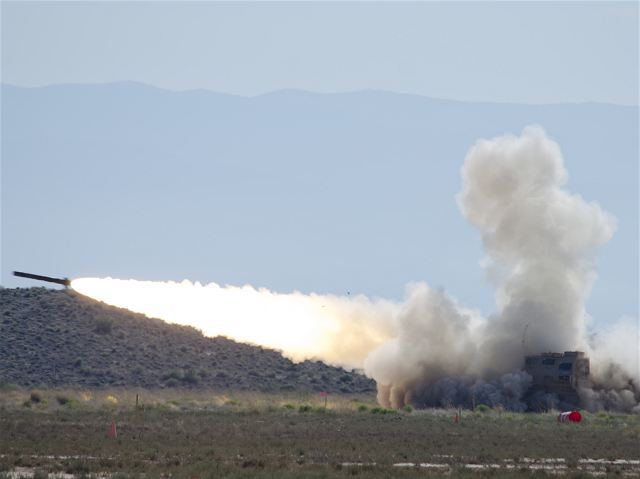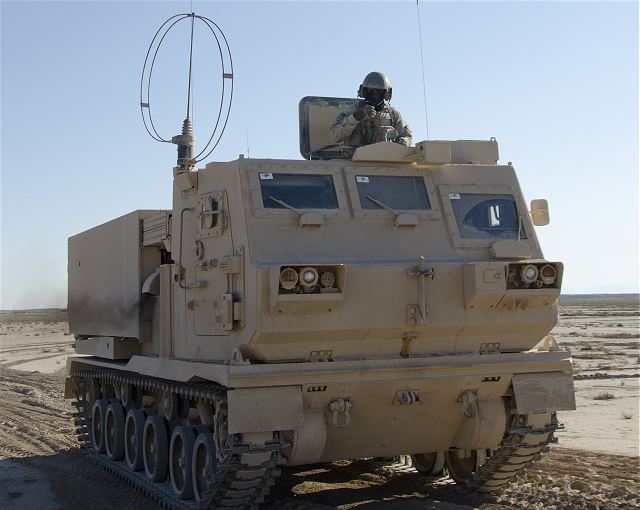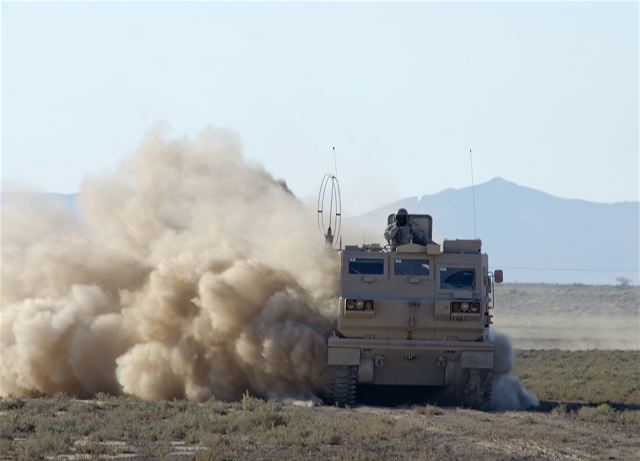|
|
|||
|
Military Defense Industry Technology - New armored cabin for M270A1
|
|||
|
|
|||
| U.S. army has tested improved version of M270A1 MLRS rocket launcher with new armored cabin. | |||
|
Over 100 artillery rockets were launched June 16 at White Sands Missile Range to test an improved version of the M270A1 Multiple Rocket Launch System. The test, conducted at WSMR's G-16 impact area, saw an M270A1 MLRS vehicle equipped with a new armored cab fire 138 rockets to ensure the improvements didn't negatively impact the vehicle's mission performance.
|
|||
|
|
|||
 An improved M270A1 MLRS of U.S. Army kicks up clouds of dust while firing during a test on White Sands Missile Range. An improved M270A1 MLRS of U.S. Army kicks up clouds of dust while firing during a test on White Sands Missile Range. |
|||
|
|
|||
|
The M270A1 is a tracked vehicle equipped with a missile and rocket launch rack capable of firing many different kinds of artillery rockets and missiles. This makes the vehicle a highly-capable weapons platform, able to perform many different artillery missions in support of many different Army and joint operations. With the original system adopted in 1983, and an improved version in 2001, the MLRS has proven itself in several different armed conflicts, including Operation Desert Shield and Storm, as well as more recently Operation Iraqi Freedom. While the core system is already proven technology, the upgrades are new, and so the Army requires the vehicle to go through a rigorous series of tests to ensure the system is ready to go to the Soldiers who will use it. By taking the system to WSMR and conducting extensive firings, the test officers were able to evaluate the improvements and ensure the new cab would hold up under the stress of combat. To conduct the test a larger launch area had to clear then is usually needed for MLRS missions on WSMR. Typically MLRS tests involve evaluating the rockets and missiles launched from the system, and WSMR has 16 launch complexes, already equipped with concrete vehicle pads and protective berms for MLRS testing. This test however required the launchers to move between shots, so an area had to be cleared that would allow for these maneuvers without risking damage to the environment. |
|||
|
|
|||
 Staff Sgt. Tyler Roundtree reaches to adjust his dust mask from the command position of an M270A1 MLRS with improved armored cab during a test on White Sands Missile Range. Staff Sgt. Tyler Roundtree reaches to adjust his dust mask from the command position of an M270A1 MLRS with improved armored cab during a test on White Sands Missile Range. |
|||
|
|
|||
|
In the filed, Soldiers manning the MLRS system have to move after shooting as modern artillery radar systems can be used to identify where an artillery shell or rocket came from, allowing an opposing artillery unit to return fire. As a mobile and self-propelled system the MLRS can fire and move, getting clear of possible counter-battery fire. This firing and movement can put a lot of stress on the vehicle though, and so the test was needed to ensure the improved cab would hold up under theses conditions. |
|||
|
|
|||
 The dusty environment of White Sands Missile Range can be harsh as seen from the dust clouds being kicked up by this MLRS during a test. The dusty environment of White Sands Missile Range can be harsh as seen from the dust clouds being kicked up by this MLRS during a test. |
|||
U.S. army has tested improved version of M270A1 MLRS rocket launcher with new armored cabin 13107151
- Posted On














